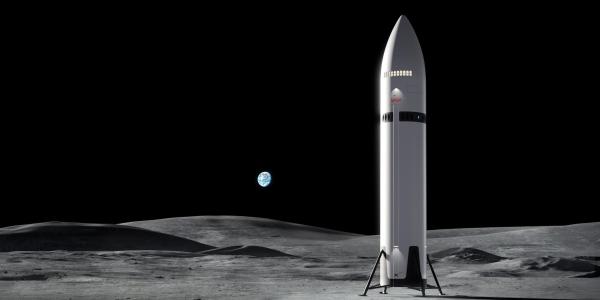The university’s designation as the lead data repository for the Artemis missions builds on a long and productive partnership with NASA.
NASA’s upcoming Artemis missions to the Moon, in which astronauts will return to the lunar surface, will mark a major leap forward in space exploration — with WashU playing a key role in each mission.

In July, the space agency formally designated the Geosciences Node, a division of NASA’s Planetary Data System (PDS) that has been at WashU since 1989, to serve as the lead science data node for the Artemis II, III, and IV missions.
“This is a serious responsibility and a great honor,” said Paul Byrne, an associate professor of Earth, environmental, and planetary sciences and the director of the Geosciences Node. “These missions will generate invaluable data about the Moon, and WashU will be charged with coordinating and sharing that data with the world," said Byrne, who is also a fellow of the McDonnell Center for the Space Sciences.
The Geosciences Node is more than a data archive. Team members work with scientists to prepare their data for long-term accessibility, oversee peer review for scientific accuracy, and help scientists find and use the data with online tools.
Ray Arvidson, the James S. McDonnell Distinguished University Professor Emeritus, founded the Geosciences Node in 1989 at the inception of the PDS. Since then, WashU researchers have stored, managed, and shared scientific data from the Moon, Mars, various asteroids, and other solid planetary bodies. “The Geosciences Node has long been a jewel of the university,” Byrne said. “We are the one-stop shop for an enormous volume of data from an array of missions throughout the Solar System.”
That trove of data includes those from scientific instruments deployed by the Apollo astronauts, as well as measurements collected by NASA’s Mars rovers from Sojourner in 1997 to Perseverance, which is still roaming the Red Planet. “Since NASA is federally funded, NASA data belong to everyone and are required to be freely available without firewalls or other obstacles,” Byrne said.

The Artemis missions will greatly advance our knowledge of the Moon while pushing the possibilities of human exploration. Artemis II, slated to launch no later than April 2026, will send four astronauts to fly by the Moon. Artemis III will land humans on the lunar surface. Further missions will continue exploration of the Moon and build the foundation for the first crewed missions to Mars. Given the long history of planetary data storage and management at WashU, the university was a natural choice to serve that role with the Artemis missions. But the announcement was still welcome news, Byrne said.
“The scope of the Artemis missions is beyond anything NASA has done before, so we didn’t take our role for granted,” Byrne said. “It’s a credit to NASA and the people at the Planetary Data System that they’re already planning for managing and sharing the data from these missions, whether they’re images from an astronaut’s handheld camera or measurements from a lunar rover. At the Geosciences Node, we're ready to do our part.”
Header image: An artist concept showing SpaceX’s Starship Human Landing System (HLS) on the Moon. Illustration: courtesy of SpaceX.





